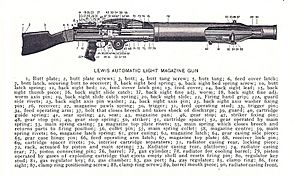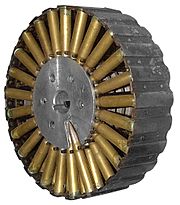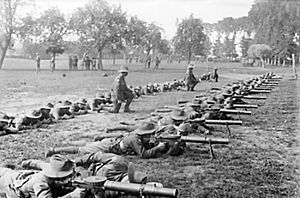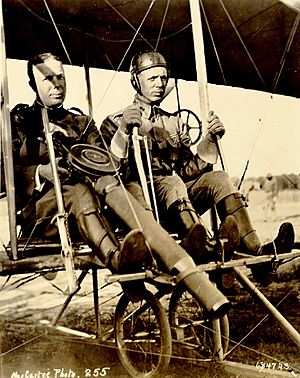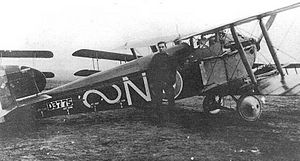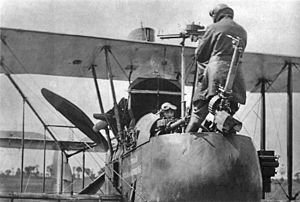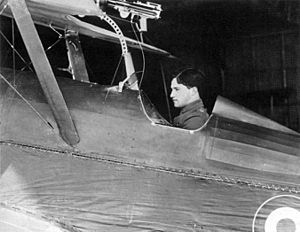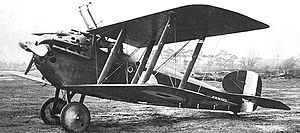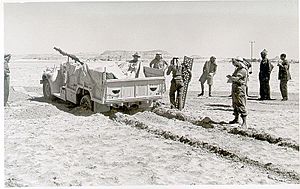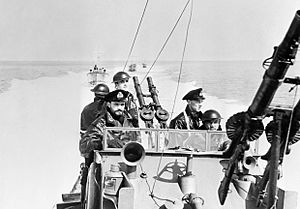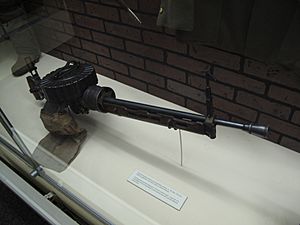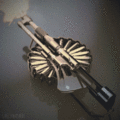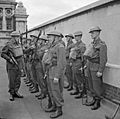Lewis gun facts for kids
Quick facts for kids Lewis gun |
|
|---|---|
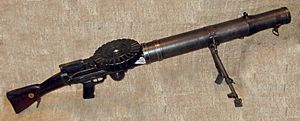 |
|
| Type | Light machine gun |
| Place of origin | United States |
| Service history | |
| In service | 1914–1953 |
| Used by | See Users |
| Wars | First World War Easter Rising Pancho Villa Expedition Emu War Banana Wars Irish War of Independence Irish Civil War Russian Civil War Latvian War of Independence Polish–Soviet War Chaco War Spanish Civil War Second World War Korean War Malayan Emergency 1948 Arab–Israeli War Vietnam War Algerian War The Troubles and other conflicts |
| Production history | |
| Designer | Samuel McClean Isaac Newton Lewis The Birmingham Small Arms Company Limited |
| Designed | 1911 |
| Manufacturer | The Birmingham Small Arms Company Limited or BSA Savage Arms Co. |
| Produced | 1913–1942 |
| No. built | At least 202,050 (50,000 in First World War and 152,050 in Second World War) |
| Variants | Mks I–V Aircraft Pattern Anti-Aircraft configuration Light Infantry Pattern Savage M1917 |
| Specifications | |
| Mass | 28 pounds (13 kg) |
| Length | 50.5 inches (1,280 mm) |
| Barrel length | 26.5 inches (670 mm) |
| Width | 4.5 inches (110 mm) |
|
|
|
| Cartridge | .303 British .30-06 Springfield 7.92×57mm Mauser 7.62×54mmR |
| Action | Gas-operated long stroke gas piston, rotating open bolt |
| Rate of fire | 500–600 rounds/min |
| Muzzle velocity | 2,440 feet per second (740 m/s) |
| Effective firing range | 880 yards (800 m) |
| Maximum firing range | 3,500 yards (3,200 m) |
| Feed system | 47- or 97-round pan magazine |
| Sights | Blade and tangent leaf |
The Lewis gun was a very important light machine gun used during the First World War. It was also known as the Lewis automatic machine gun or Lewis automatic rifle. It was lighter than many other machine guns of its time. This made it easier for soldiers to carry and use in battle.
Contents
History of the Lewis Gun
The Lewis gun was invented by an American Army officer named Isaac Newton Lewis in 1911. He built on earlier ideas from Samuel Maclean.
When the First World War began, there was a huge need for new weapons. The Birmingham Small Arms Company (BSA) in England started making the Lewis gun. They called it the Model 1914. The gun was officially approved for use on October 15, 1915.
How the Lewis Gun Was Made
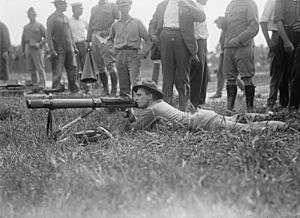
The Lewis gun was mainly produced by BSA in England and the Savage Arms Company in the United States. During the First World War, no Lewis guns were made in Belgium.
The guns made by BSA and Savage Arms were very similar. However, they had small differences that meant parts could not always be swapped between them. This problem was fixed by the time of the Second World War.
How the Lewis Gun Worked
The Lewis gun worked using a system called "gas-operated reloading." This means it used the gas from a fired bullet to prepare the gun for the next shot.
The gun used a special round magazine called a "pan magazine." These magazines could hold either 47 or 97 bullets.
The Lewis gun could fire about 500 to 600 bullets every minute. It weighed about 28 pounds (12.7 kg). This was about half the weight of other machine guns from that time. Because it was lighter, one soldier could carry and use it by themselves.
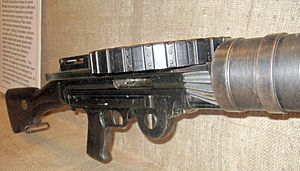
The Lewis Gun in Service
First World War Use
Even before the First World War officially began, the Belgian Army used 20 test versions of the Lewis gun. They used them to defend the city of Namur in 1914.
Used on Aircraft
The Lewis gun was the first machine gun ever fired from an airplane. On June 7, 1912, Captain Charles Chandler of the US Army fired a Lewis gun from a Wright Model B Flyer. This was a very important moment in military aviation.
Lewis guns were often mounted on airplanes during the First World War. They were used by pilots to shoot at enemy aircraft or ground targets.
Other Uses of the Lewis Gun
The Lewis gun was used in many other conflicts after the First World War. It was even used in the Second World War.
Images for kids
-
A British Home Guard platoon in 1941. The soldier on the right is carrying a Lewis gun. The man next to him is carrying the drum magazine.
See also
 In Spanish: Ametralladora Lewis para niños
In Spanish: Ametralladora Lewis para niños


